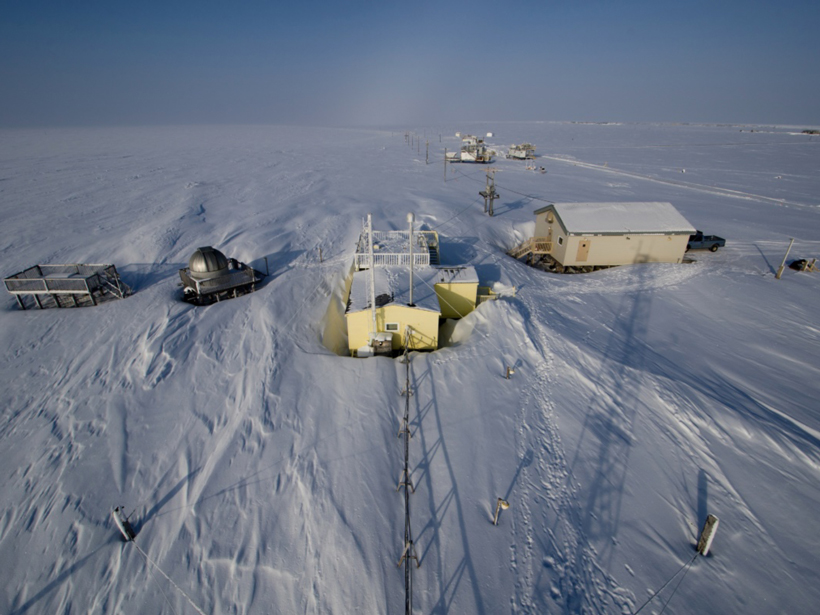Source: Journal of Geophysical Research: Atmospheres
When fossil fuels, wood, and other organic materials burn, they release smoky soot into the atmosphere. A major component of soot is black carbon, which consists of pure carbon particles that absorb solar radiation and promote global warming.
The heating effects of black carbon may be especially strong in the Arctic, where the particles can settle onto snow, making the surface less reflective and more prone to sunlight absorption. However, black carbon is difficult to measure, so its precise effect is tricky to gauge. To improve understanding, Sinha et al. recently made new, more accurate measurements of black carbon in the Arctic atmosphere.

From 2012 to 2015, the team measured black carbon atmospheric concentrations in Barrow, Alaska, and Ny-Ålesund, Spitsbergen, Norway. They calculated the concentrations based on measurements of light absorbed by black carbon particles in air samples. Other aerosol particles mixed in with black carbon can interfere with these measurements, so a scheme called the continuous soot monitoring system (COSMOS) was used to heat the air and evaporate the aerosols before light absorption was measured.
Although COSMOS improves on other methods that do not account for the interfering effects of other aerosols, it has limitations of its own. Some aerosols, such as sea salt, may remain after heating and interfere with light absorption measurements. To quantify the resulting uncertainty, the scientists performed laboratory experiments and calculated that at both sites, sea salt results in overestimation of black carbon concentration by an average of about 2 nanograms per cubic meter.
To evaluate the COSMOS measurements, the researchers compared their results with black carbon concentrations obtained at the same two sites using other methods, including one that used an aircraft-mounted instrument. The comparisons showed that COSMOS gave consistent and reliable results at both sites.

The researchers also compared COSMOS results with measurements obtained using particle soot absorption photometer (PSAP) instruments, which measure light absorption from all types of particles. Light absorption measured using the PSAP method was 22% higher at Barrow and 43% higher at Ny-Ålesund than COSMOS results, probably because of absorption enhancements from other aerosols.
Because the PSAP measurements were consistently higher than those of COSMOS, the scientists were able to reevaluate older PSAP light absorption data collected from 1998 to 2012 at Barrow and from 2006 to 2012 at Ny-Ålesund. Using COSMOS data as a reference, they calculated more accurate long-term black carbon concentrations, revealing yearly changes that could reflect changes in the amount of black carbon emitted by human activity.
These corrected long-term data sets, along with a promising way to measure black carbon more reliably in the future, could help improve understanding of black carbon trends in the Arctic. The Arctic is warming about twice as fast as the global average rate, and a better understanding of the role of black carbon could also help improve global climate models. (Journal of Geophysical Research: Atmospheres, https://doi.org/10.1002/2016JD025843, 2017)
—Sarah Stanley, Freelance Writer
Citation:
Stanley, S. (2017), Black carbon measurements in the Arctic get an upgrade, Eos, 97, https://doi.org/10.1029/2017EO072321. Published on 03 May 2017.
Text © 2017. The authors. CC BY-NC-ND 3.0
Except where otherwise noted, images are subject to copyright. Any reuse without express permission from the copyright owner is prohibited.

